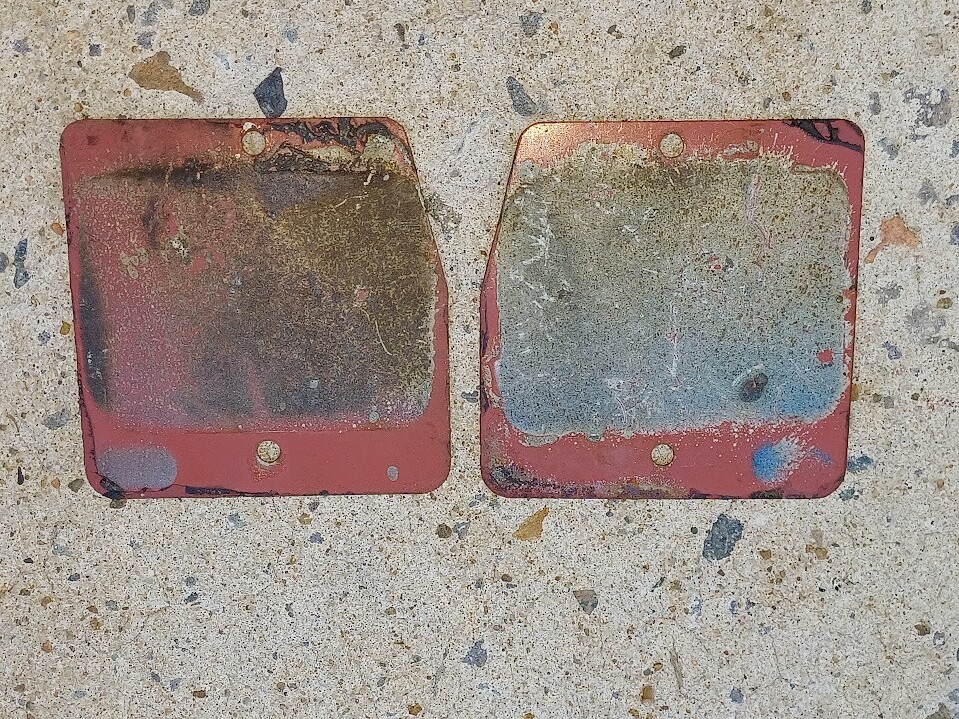Thanks Willie. The rear pressings also differ ever so slightly between early and midyears. A few angles look like the covers plates may also differ but not clear enough to be sure. The vague photos I've seen seem to match roughly the change in interior plastic armrest panels change, so 70-72 and 72-up, with cover plates used until perhaps 1975.
The guy I got these plates off thought they were off a 75 or 76, but they are also the earlier red primer of 70-73 or so, not the brown shade so that guess is not one to base much on. I haven't seen recent pics of other years to see which still used them or had holes or not.
Anyway, some newer pics just because. Guys are bored with the topic so this is perhaps more to do with going off photos to match red primer.
This is the plates as removed, interior side showing. Black brush-on goo for sticking of wheelarch insulation next to it.
 Firebird 70-75 rear interior armrest cover plates unwashed (2)
Firebird 70-75 rear interior armrest cover plates unwashed (2) by
Ben, on Flickr
As removed, inside body faces, grey primer/blue paint overspray from door jamb opening areas. The staining is likely from the interior side seeping through, rather than these being sealed to body.
 Firebird 70-75 rear interior armrest cover plates unwashed (1)
Firebird 70-75 rear interior armrest cover plates unwashed (1) by
Ben, on Flickr
Cleaned-up and using garage lighting only, no flash.
 Firebird 70-75 rear interior armrest cover plates washed (1)
Firebird 70-75 rear interior armrest cover plates washed (1) by
Ben, on Flickr
Same again but using flash inside house. Much more of an orange look that is not accurate.
 Firebird 70-75 rear interior cover plates washed flash lighting (1)
Firebird 70-75 rear interior cover plates washed flash lighting (1) by
Ben, on Flickr
Scanned pic using printer scanner, and using the two best sides for recording the colour or red primer.
 Firebird rear interior armrest panel covers 70-75 red primer scanner
Firebird rear interior armrest panel covers 70-75 red primer scanner by
Ben, on Flickr
I considered even sending one off to paint shop to get some primer matched for future use, but mine uses the later brown primer, nor is it worthy of even touching up in this way so won't bother now.
Of interest also is that the plates are completely covered both sides evenly. So being an early red primer, it is Norwood dip and the plates must have been only loosely attached by the screws a few threads for complete coverage and only marks from clamping over the paint, not bare areas where sealed onto body when screwed tightly. Van Nuys were still spraying grey primer and black overcoat during these years before swapping to the red-brown primer for roughly 74-78.


 Recent Posts
Recent Posts







